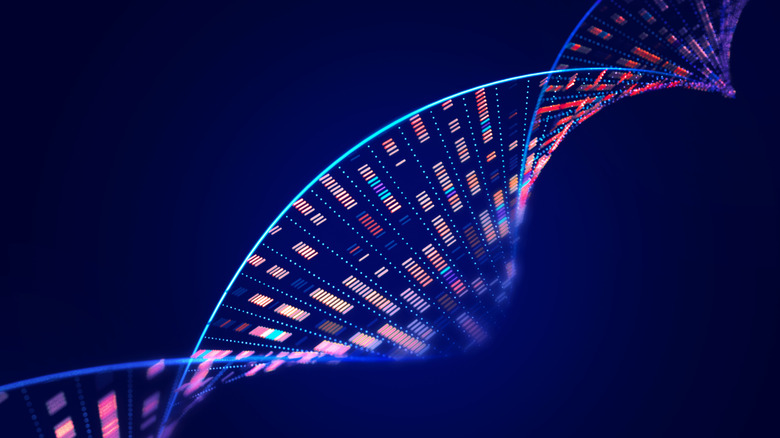The Reason You're A Night Owl Might Not Be Your Fault
Since researchers determined that getting proper sleep is just as important as diet and exercise for maintaining a healthy lifestyle, they've investigated many facets of sleep. For instance, they've found that nightmares may predict real-life illnesses, such as obstructive sleep apnea. And, while a 2018 study discovered that too much sleep may decrease your lifespan, other studies have revealed that sleeping too little is also a habit that makes you more likely to die early. Among these findings, is an explanation for why some people are night owls and that it's out of their control.
In a 2017 study published in Cell, researchers at The Rockefeller University in New York City identified that a mutation of the gene CRY1, which makes a protein that suppresses the circadian clock, makes the gene more active. Many people who categorize themselves as night owls are diagnosed with delayed sleep phase disorder (DSPD). However, the scientists found at least one patient diagnosed with DSPD who had the CRY1 variant. They collected a range of data, such as body temperature and sleep-regulating hormone levels (including melatonin), and the DSPD patient had a four to six-hour delay in melatonin rising compared to the other participants.
Michael W. Young, the senior author and head of Rockefeller's Laboratory of Genetics, told The Rockefeller University, "Compared to other mutations that have been linked to sleep disorders in just single families worldwide, this is a fairly impactful genetic change." He and his team estimate that the CRY1 mutation affects one in 75 individuals with non-Finnish European ancestry, so they have a longer circadian cycle and naturally go to sleep later than the average person. And, since it's dominant, just one copy can trigger a sleep disorder like insomnia or narcolepsy.
The molecular mechanism that leads to DSPD
Since 2017, scientists have continued building on the initial CRY1 mutation finding. A 2020 study published in Proceedings of the National Academy of Sciences that shows how the genetic variant slows the circadian clock and causes DSPD. The body regulates four main clock proteins — BMAL1, CLOCK, cryptochrome, and period — and the authors explain that two of them form the complex CLOCK:BMAL1. This complex triggers the production of cryptochrome and period proteins which combine and in turn suppress the CLOCK:BMAL1 complex's ability to trigger their production — they basically deactivate themselves. The process repeats, and this loop is the primary mechanism behind the circadian clock.
The CRY1 mutation affects the cryptochrome, leaving out the molecular tail that controls the activity that maintains the body's natural 24-hour clock. Because of this missing section, the protein binds tighter to a pocket in the CLOCK:BMAL1 complex, delaying its termination of cryptochrome and period production, thereby lengthening the circadian clock. Carrie Partch, one of the study authors at University of California Santa Cruz, told the university in a statement, "How tightly the complex partners bind to this pocket determines how quickly the clock runs."
Since many individuals affected by DSPD and the CRY1 mutation tend to go to sleep so late — usually after 2 a.m. — they don't get the amount of sleep they really need, which is seven to nine hours for most adults. Partch explained that, with their new findings, they now know to look for medications that bind to the pocket to fill the gap left by the missing segment in cryptochrome. That's exactly what Partch and the lab at UC Santa Cruz are doing to shorten the circadian clock and help people with the missing link go to sleep sooner.

